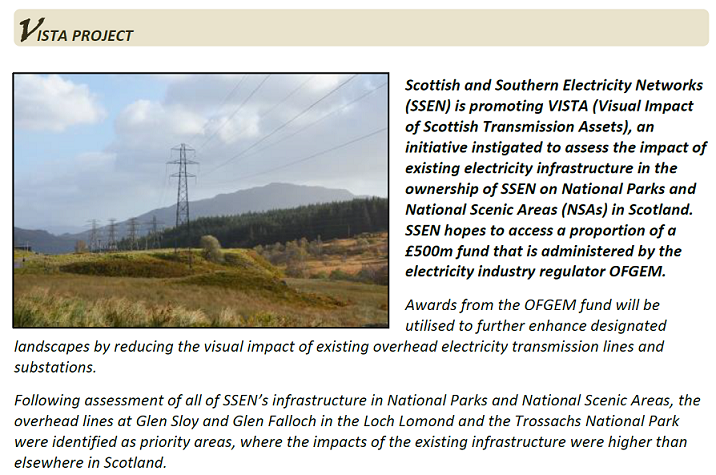
The visual impact of electricity pylons in National Parks and Areas of Outstanding National Beauty have been a political issue for some time in England and Wales. In response to public pressure, a £500m UK wide fund was created to help underground powerlines. Scotland was allocated a share of this but development of proposals here has generally been much slower than down south where proposals were announced four years ago (see here).
Within that context, however, the Cairngorms National Park Authority has been well ahead of the Loch Lomond and Trossachs National Park Authority in taking advantage of this funding. In the Cairngorms National Park Projects are underway to underground 12km of powerlines around Boat of Garten and Nethybridge. This follows the removal of the powerline between Kingussie and the Lecht which the CNPA agreed as compensation for the Beauly-Denny line through the Drumochter (see here for explanation of how the two projects relate). Now, rather late in the day (the fund ends in 2021), there are proposals to remove sections of powerline by Loch Sloy and in Glen Falloch. This post takes a look at the proposals.
Glen Sloy
The proposals for Glen Sloy, by Inveruglas on Loch Lomond, are well described in the excellent Arrochar and Tarbet Community Development Trust newsletter:
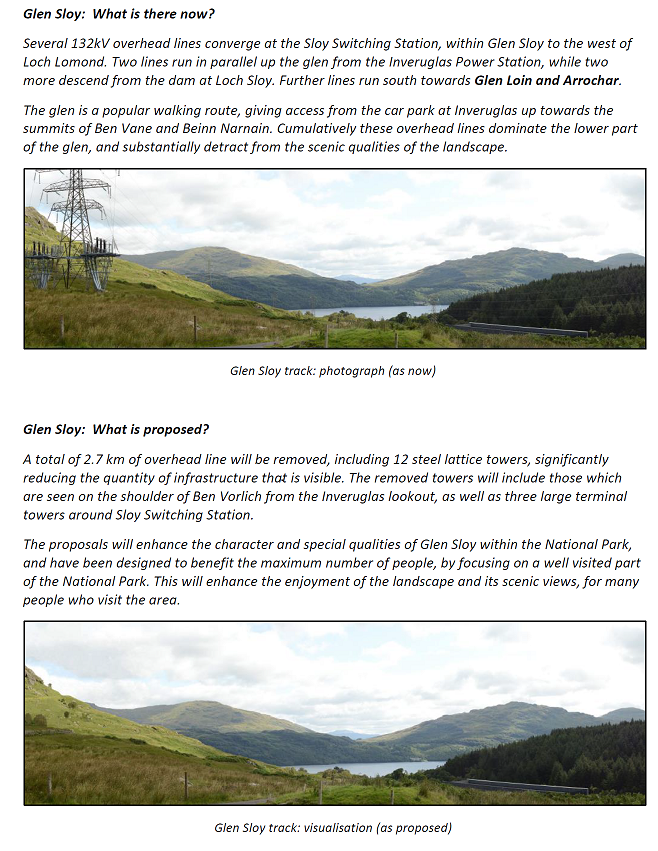 The powerlines in Glen Sloy, which forms one of the main entry points into the Arrochar Alps, have long been a blot on the landscape:
The powerlines in Glen Sloy, which forms one of the main entry points into the Arrochar Alps, have long been a blot on the landscape:
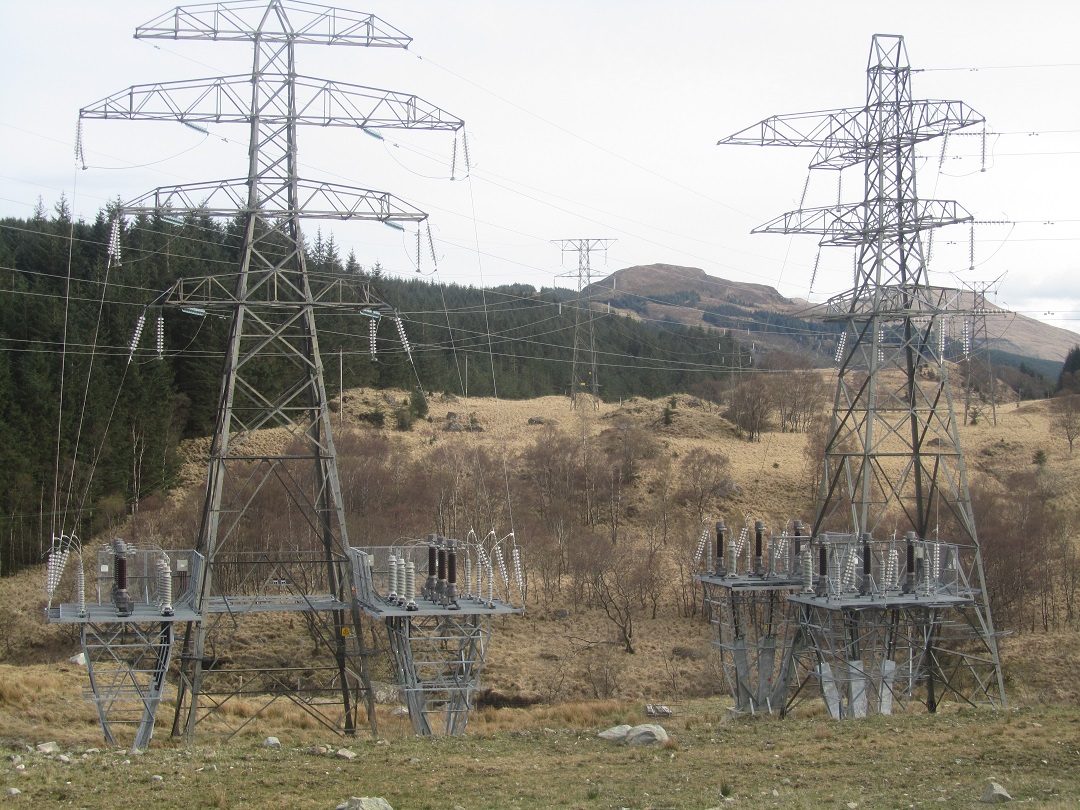
Anything that could be done to reduce their impact should therefore be welcomed.
Its only 7 years, however, since the new Glen Sloy electricity sub-station was given the nod by the Loch Lomond and Trossachs National Park Authority (see here for planning papers). The old sub-station, where the transformers were in the open, was replaced by a new one, concealed in a new building now described as a “switching station”.
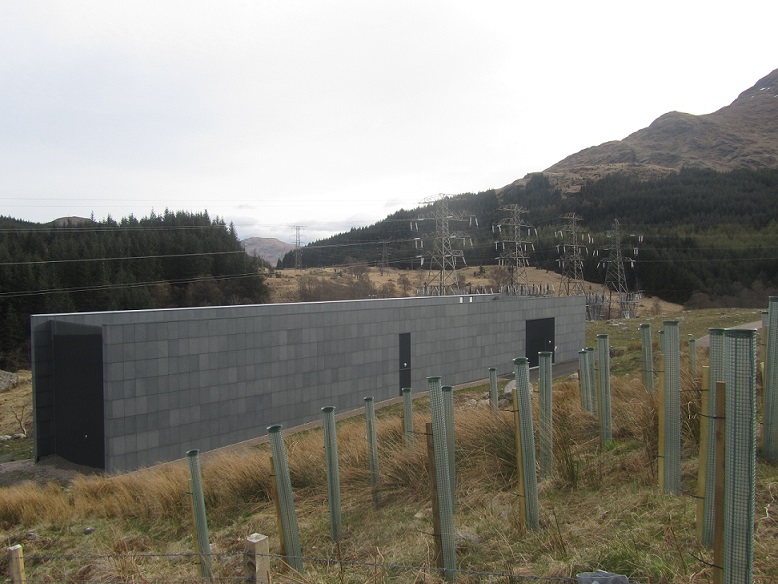
After a paragraph of planning speak:
“The prominent parallel lines and axis of the existing switching station (including its vertical busbars) have been re-iterated in the design of the new building. The north and south elevation (granite rainscreen) is emphasised and will project above, and proud of, the gable elevations (metal louvres) and this will help to ensure that the building does not appear as one solid block. The simple palette of materials that has been chosen takes account of the sensitivity of the setting and assists in ensuring that the building does not unduly compete for attention within its landscape.”
The LLTNPA reached this conclusion about the new building:
“There is no doubt that the finished building will have a presence in its location, however, it is considered that this can be accepted on a number of grounds: as it serves an important and necessary function; provides a better long-term sustainable approach for this function; and provides a well considered and improved response to the design and siting than the existing infrastructure offers”.
I don’t know about you but I find it hard to imagine any building that could be less appropriate in this landscape? In my view its a National Park endorsed horror. At least someone has retreated from the Park’s original conclusion that screening of the building would not be required! The trees that have now been planted will, however, take a long time to make much difference.
The point, however, in relation to the new proposal to remove powerlines is two fold. First, Scottish and Southern Electricity Networks spent what must have been a considerable sum of money just a few years ago upgrading the power station which must have involved some work on powerlines which are now to be undergrounded. That is not good use of money. Second, that if the LLTNPA was to take a coherent view of landscape as a whole, we would have avoided a situation where SSEN is damaging the landscape on the one hand and then improving it on the other.
Glen Falloch

The incoherence of the LLTNPA’s approach to landscape is also illustrated by Glen Falloch, where SSEN is proposing to remove the major powerline that runs along the glen.
Again the proposal itself is welcome. The powerline dominates the West Highland Way which is marketed as Scotland’s premier walking route and attracts thousands of people each year. Walking under pylons is far from a world class walking experience and I have long thought that any country which cared about quality tourism would have tried to remove them.
In my view, however, the proposal is only a small start. The head of Loch Lomond and bottom of Glen Falloch are dominated by electricity pylons and the substation. What should be, in terms of natural beauty, one of the most special places in the National Park has in landscape terms been despoiled (with conifer plantations also playing their part).
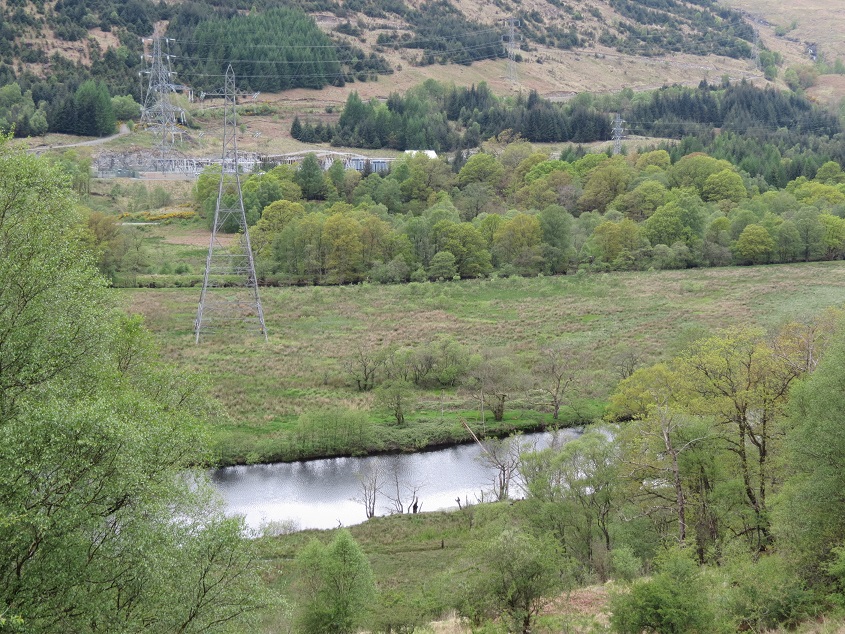
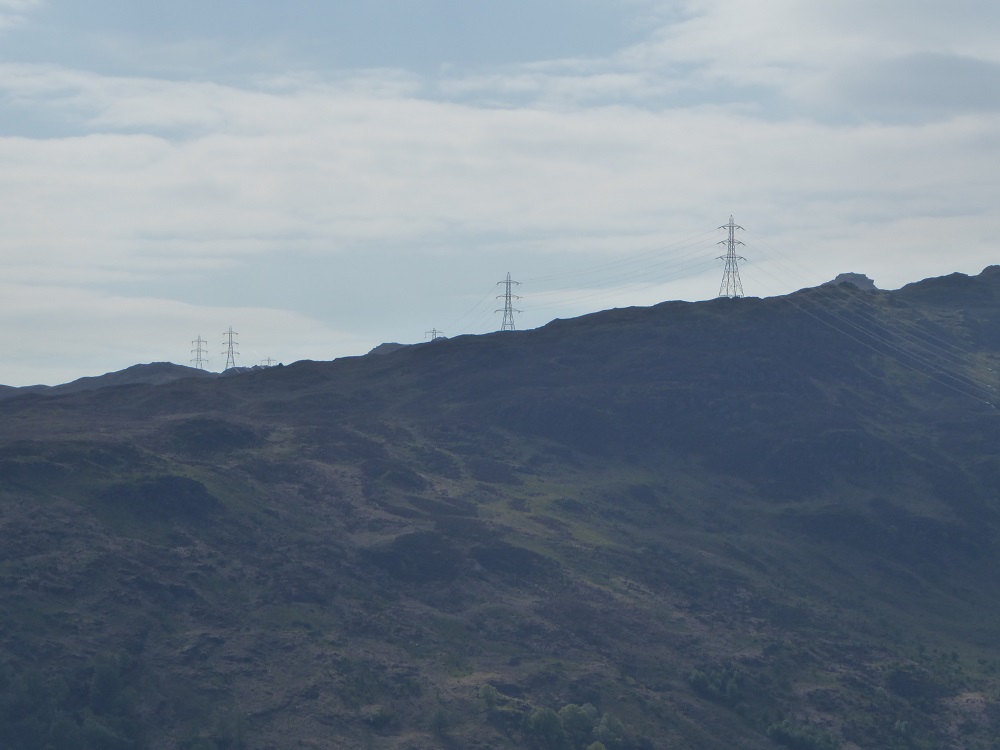
Within this context, its not so long ago, in 2010 that the LLTNPA granted approval for a second 11kv powerline running up Glen Falloch (see here).
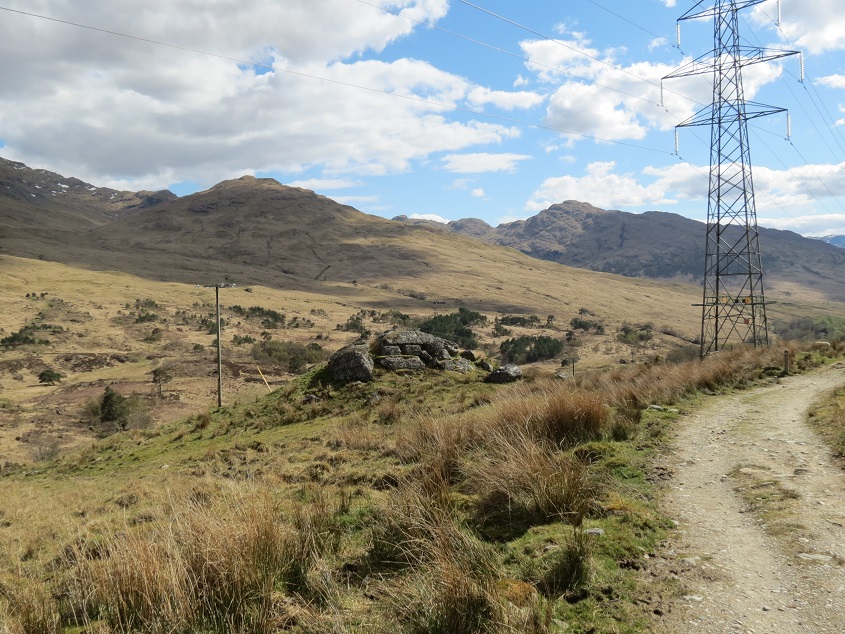
The 11kv powerline has a much smaller landscape impact than the main powerline but it has added to the adverse impacts of powerlines in the glen and would also have been much easier and cheaper to underground than the main powerline (see here). Undergrounding of this new line does not appear to have been even considered by the LLTNPA. Hence we are in a position where, a few years after putting up one powerline, SSEN are taking down another that runs more or less parallel to it.
Ofgem, the regulator of our privately owned electricity transmission suppliers, when announcing the £500m pylon removal fund acknowledged that new transmission lines had been poorly planned but claimed that lessons had been learned and a more coherent approach was now being taken. Unfortunately, that does not appear to be the case around Glen Falloch.
For the last few years SSEN has been “upgrading” the powerline which runs from the Glen Falloch sub-station over to Glen Orchy via Gleann nan Caorainn, the beautiful glen that runs south of Ben Lui and Ben Oss and which forms part of the Ben Lui Wild Land Area. To me, this area offers the greatest opportunity for re-wilding in the National Park although as SNH’s assessment of its wild land qualities states, its marred by hydro infrastructure and powerlines. The point is that instead of seeing the need to upgrade this section of line as an opportunity to remove blots from the landscape, the LLTNPA has simply endorsed ALL SSEN’s proposals:
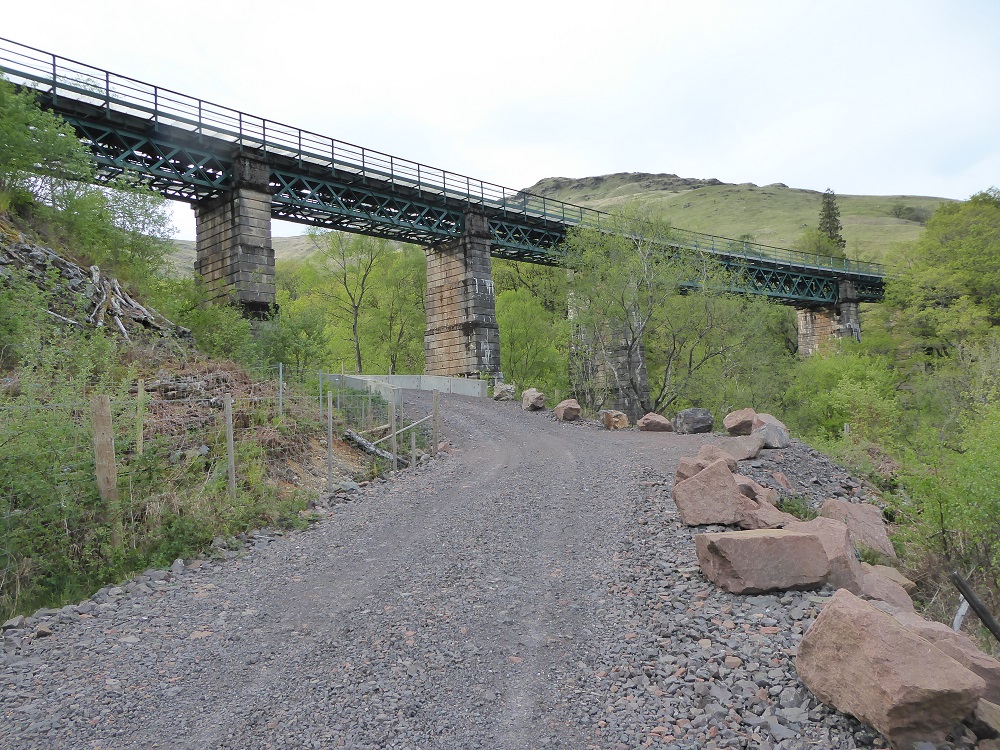
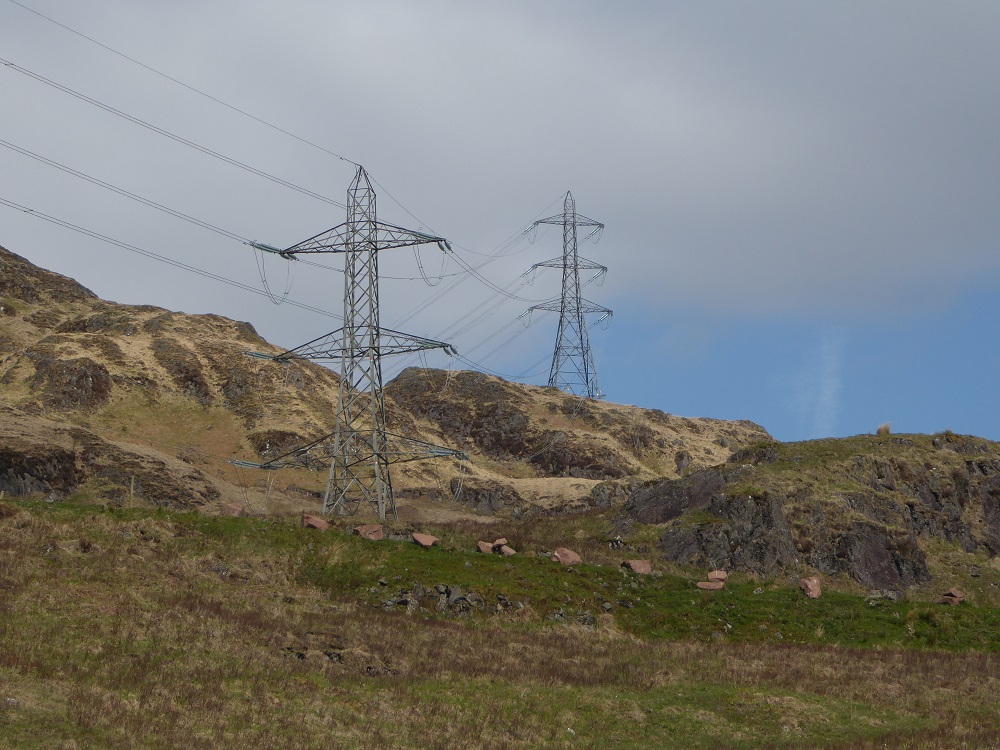
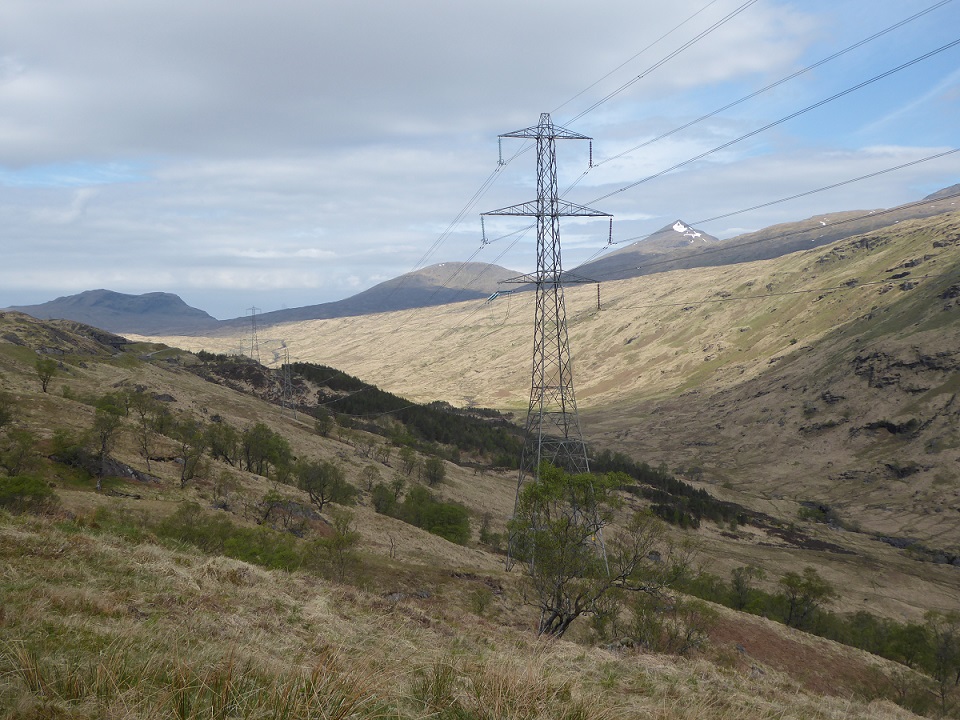
This is a major lost opportunity and an illustration of why the LLTNPA needs to take a much more coherent approach to electricity transmission lines.
The contrast with the CNPA is striking. Their Board strongly objected to the Beauly Denny line and, when they were overruled on this, extracted as a concession that other overhead powerlines in the National Park would be removed. They have made fantastic progress on that, aided by private initiatives such as Wild Land Ltd undergrounding the powerline in Glen Tromie, while the LLTNPA has shown no inclination to even consider the issues. That, as much as anything, explains why these proposals to remove powerlines in the Loch Lomond and Trossachs National Park have emerged so late in the day.
What needs to happen
I would like to see the LLTNPA take the lead on a consultation on the future of overhead powerlines in the National Park with a view to adopting a long-term strategy on this issue. Such a strategy should seek to ensure that ANY upgrading of transmission lines would result in landscape improvements.
The wider issue, however, is our private electricity market. As statutory undertakers the electricity transmission companies have enormous powers to decide what happens which does limit the ability of our National Parks as planning authorities to control what they do – although the CNPA had demonstrated how much can be done given the will. Without firm guidance, however, it simply doesn’t matter to SSEN if one moment they are paid to erect new powerlines and the next someone pays them enormous sums of money to remove them – it all adds to their profitability.
If we are to address global warming, electrical power from renewable resources will become ever more important. That will require not just investment in renewables but continued powerline investment to ensure we can get electricity to the right places. In my view, leaving decisions about such crucial infrastructure to the private market is likely to be just as disastrous as the hydro generation scheme free for all (see here for example). With the declaration of a climate emergency, there is a compelling case for a national investment plan for the generation and supply of electricity. That probably requires re-nationalisation of the graid. An integral part of national plan for electricity should concern the location and design of power stations and supply lines in order to avoid the type of adverse landscape and environmental impacts which have been caused in places such as Glen Falloch and Glen Sloy.
Good to see such a detailed and informative post on an issue which has had many of us grinding our teeth. How frustrating to see the power companies thoughtlessly wrecking beautiful landscapes on the one hand while “restoring” what they have previously despoiled on the other, both times in return for a fat pay cheque. The same is happening in the land of small-scale hydro: weirs have sprung up on every available burn and river as developers and landowners rush to cash in on the present goldrush, yet recent evidence suggests many of these schemes have not been designed with climate-generated flood events in mind and they are susceptible to flood damage which could ultimately render them unfit for purpose. Money was made installing them and money will be made repairing them, at who knows what ultimate cost to the environment. Returning to pylons and powerlines generally, would it not make sense to put the grid connection for the consented Glen Etive schemes underground and avoid having to “restore” the glen at a later date? Fat chance, I fear.
I had meant to mention Glen Etive. The powerlines there need to be “upgraded” if the hydro schemes go ahead. As I recall the developer had originally talked about undergrounding the line but then SSEN assumed responsibility and I understand current position is they will upgrade current lines so they remain highly visible. Another good example of SSEN’s lack of interest and concern for the landscape.
Thanks for sharing this. Where I live in Kinlochleven we are under threat from a proposal to install a zip wire attraction with two sets of wires spanning an iconic view down Loch Leven. The visual impact assessment implied that these wires will be barely visible and would have no impact on the National Scenic Area. This thinking is in stark contrast to the ideas expressed in this article. In any case, putting up with utility cables which supply my home is a very different matter to putting up with a frivolous fairground ride. There is currently a petition on the go to ask the Highland Council to refuse planning permission for this project. Please take a look (http://chng.it/nDjkN4656H) and also have a look at the Facebook group: Kinlochleven Zip Wite Opposition Group. We need all the help we can get and time is fast running out to halt this proposal.
I read the article with interest after wondering what on earth was going on just outside Crianlarich. I just could not believe what a total waste of money when it could be spent on many more useful projects. Providing litter bins and a service to empty them. Asking many people if they even notice the pylons while passing the area the answer is always NO. Unless you go high up in the hills most of the pylons are hidden by the overgrown areas of trees. The drive along Loch Lomond will soon just be a tunnel of trees with no views of the loch. Ask local people what they need. They live in the area and need local services not money wasting projects. A second thought maybe the pylons are being removed to make space for all the wind turbines needed to provide power for all the charging points for the electric cars.